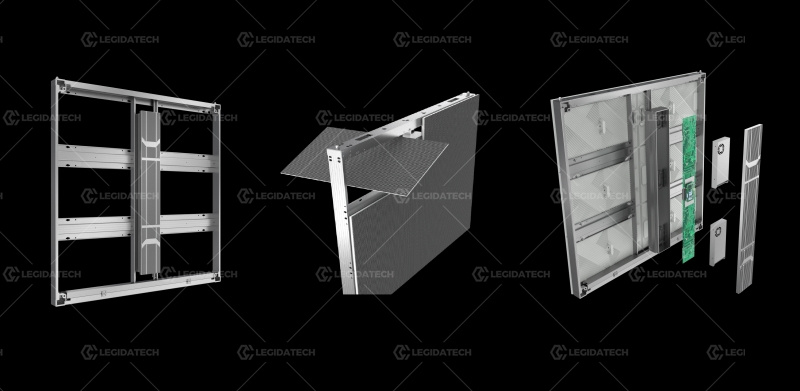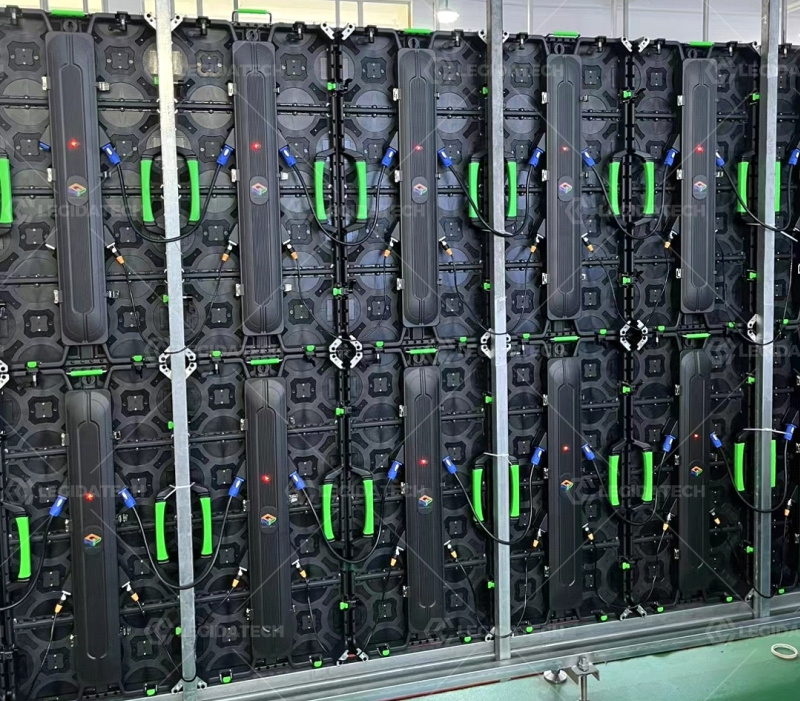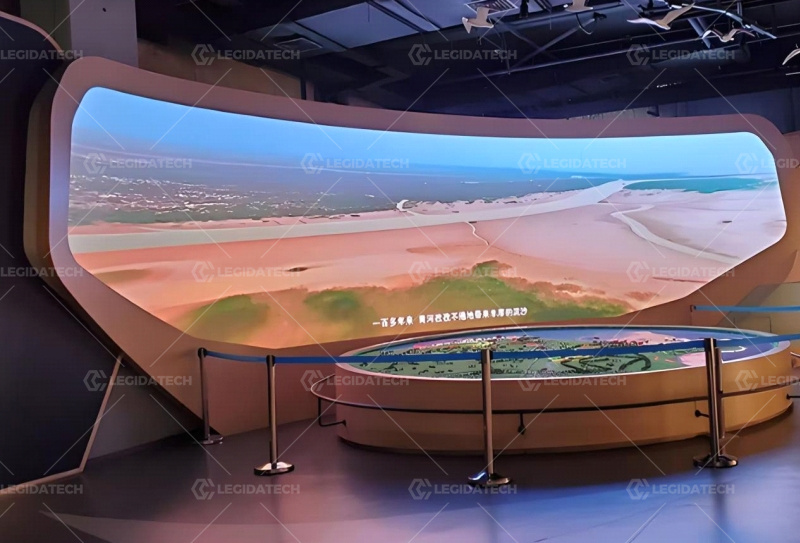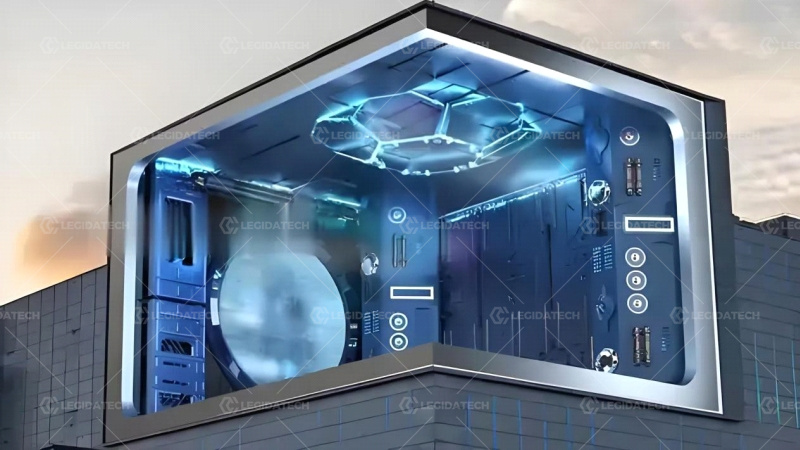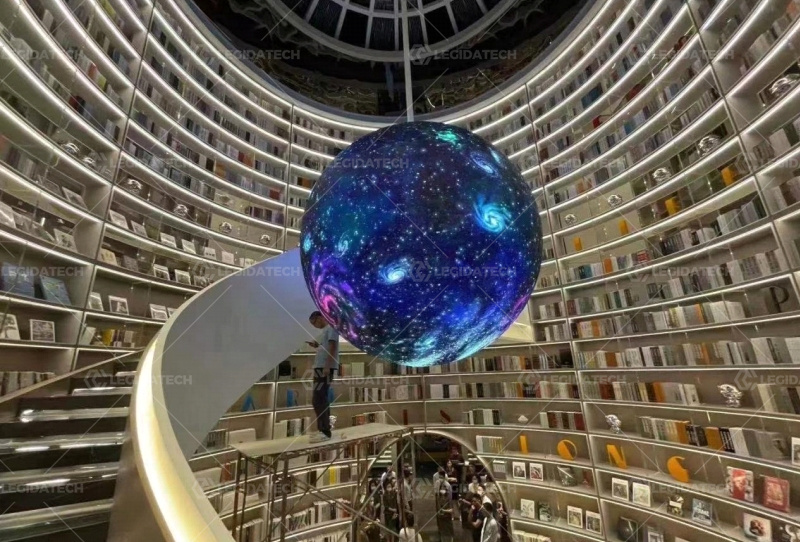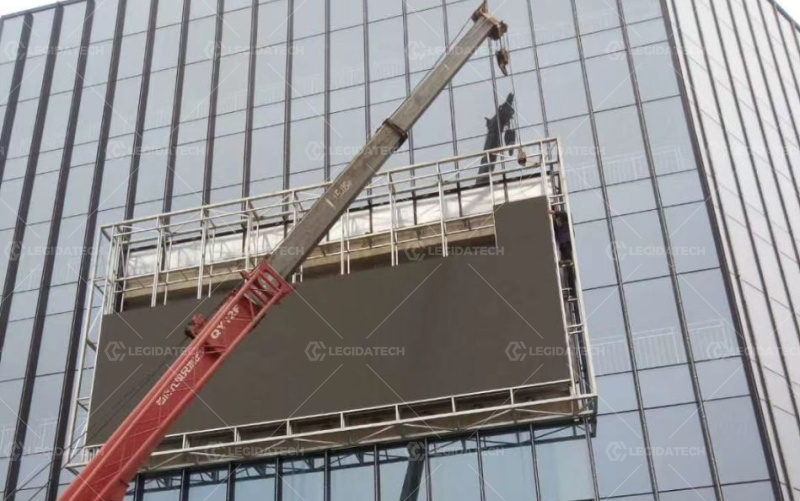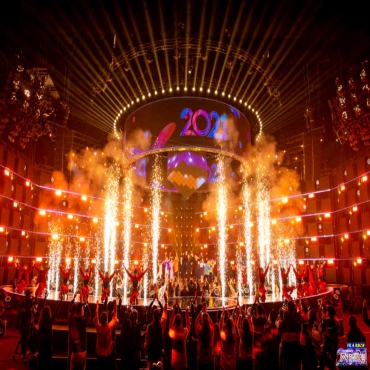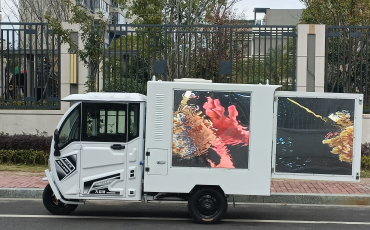The Concept of LED Screen Cabinets
An LED screen cabinet, often simply called a “cabinet,” is a modular unit that forms the building blocks of larger LED displays.
These cabinets are designed to house multiple LED modules, along with the necessary power supplies, driver boards, and cooling systems.
They come in standard sizes, which simplifies the manufacturing process and allows for easy customization of display dimensions.
Cabinets are typically made of sturdy materials such as aluminum or steel, providing structural integrity to protect the delicate internal components.
Their robust construction also enables them to withstand the rigors of transportation, installation, and long-term use.
The Process of Cabinet Splicing
Planning and Design:
Before starting the splicing process,you need to determine the overall size and shape of the final display, calculating how many cabinets will be required horizontally and vertically.
This phase also involves considering factors like viewing angles, pixel pitch, and the intended content to be shown.
Cabinet Assembly:
Each cabinet is first assembled and tested in a factory environment, where the LED modules are carefully mounted to the internal frame of the cabinet and the electrical connections for power and signals are made.
Quality control checks are carried out at this stage to ensure that each cabinet is individually operational.
On-Site Installation:
Once the cabinets are ready, they are transported to the installation site.
Workers begin by mounting the bottom row of cabinets, carefully aligning them using leveling tools. Brackets and fasteners are used to secure the cabinets in place.
After the first row is complete, subsequent rows are added one by one, with meticulous attention paid to maintaining a seamless join between adjacent cabinets.
What Are LED Displays?
LED, which stands for Light Emitting Diode, is a semiconductor device that emits light when an electric current passes through it.
LED displays are made up of an array of these tiny diodes.
Unlike traditional cathode-ray tubes (CRTs) that were bulky and consumed more power, LED displays are sleek, energy-efficient, and offer far superior visual quality.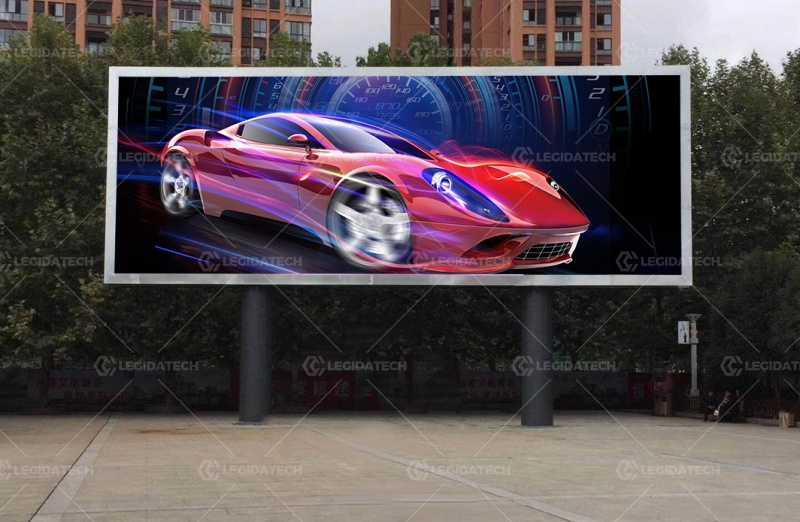
The Anatomy of an LED Display
LED Chips:
At the heart of every LED display are the LED chips themselves. These chips come in different colors, with red, green, and blue (RGB) being the most common combination.
Smaller chips are often used for high-resolution displays,like those on smart devices, while larger ones may be sufficient for outdoor signage seen from a distance.
Driver ICs:
Driver integrated circuits (ICs) are responsible for controlling the LED chips.
They regulate the electrical current flowing to each diode, ensuring that the right amount of light is emitted.
This precision is crucial for creating sharp images and smooth video playback. Faulty driver ICs can lead to dead pixels or uneven brightness across the display.
Circuit Boards:
Printed circuit boards (PCBs) serve as the physical platform where the LED chips and driver ICs are mounted. They also distribute power and data signals throughout the display.
High-quality PCBs are designed to minimize electrical interference, which could otherwise distort the visual output.
Types of LED Screens
Indoor LED Screens:
Tailored for controlled environments, indoor LED displays typically have lower brightness levels, usually ranging from 1000 – 2500 nits.
They feature smaller pixel pitches, such as P1.5 – P3, allowing for detailed and high-resolution visuals.
These are perfect for settings like shopping malls, corporate lobbies, or museums, where viewers are in close proximity.
Outdoor LED Screens:
Built to withstand the elements, outdoor LED display screens are rugged. With brightness levels that can exceed 6000 nits, they combat sunlight glare effectively.
Larger pixel pitches, like P10 – P20, are common, as they maintain legibility from long distances.
Waterproofing, often with IP67 or IP68 ratings, and dust resistance protect the hardware from environmental damage.
Flexible LED Screens:
As the name suggests, these screens can bend and curve, adding a unique, eye-catching dimension to visual presentations.
They’re made using flexible printed circuit boards and are increasingly popular in creative installations, such as wrapping around columns or creating immersive 3D-like effects.
Understanding Pixel Pitch
Pixel pitch is a fundamental concept in LED displays. Measured in millimeters, it refers to the distance between the centers of two adjacent pixels.
A smaller pixel pitch means more pixels per square inch, resulting in a higher resolution and sharper image. For instance, a P2.5 display has a pixel pitch of 2.5mm, while a P10 display has a 10mm pitch.
When choosing an LED display, the viewing distance plays a crucial role in determining the ideal pixel pitch.
Up close, a small pitch is essential for clarity, while for far-off viewing, a larger pitch suffices.
Brightness and Contrast
Brightness:
Measured in nits, brightness determines how vivid and visible the screen is.
Higher nit values are required for outdoor settings to overcome sunlight, while indoor displays can operate at lower brightness for a more comfortable viewing experience.
Contrast:
Contrast ratio, expressed as the difference between the brightest white and the darkest black a display can make, impacts the visual quality.
A high contrast ratio makes images more vibrant and lifelike, with deeper blacks and brighter whites.
Installation Considerations
Mounting Options:
LED displays can be wall-mounted, ceiling-mounted,column-mounted or installed in a freestanding structure.
The choice depends on the space available, the viewing angle requirements, and the overall aesthetic of the location.
Wall-mounted screens are common in retail stores, while ceiling-mounted ones may be used for large indoor arenas to ensure visibility from all angles.
Power and Connectivity:
Adequate power supply is essential, especially for large, high-brightness displays.
Additionally, data connectivity, whether through Ethernet, HDMI, or wireless protocols, needs to be reliable for seamless content delivery.
Outdoor installations may require special considerations for power protection against weather-induced surges.
Maintenance and Longevity
Regular maintenance helps extend the lifespan of LED display screens.
This includes cleaning the screen surface to remove dust and dirt, checking for loose connections, and monitoring the performance of driver ICs.
LED displays typically have a long operational life, often lasting tens of thousands of hours.
Learn More
Author : Amber



